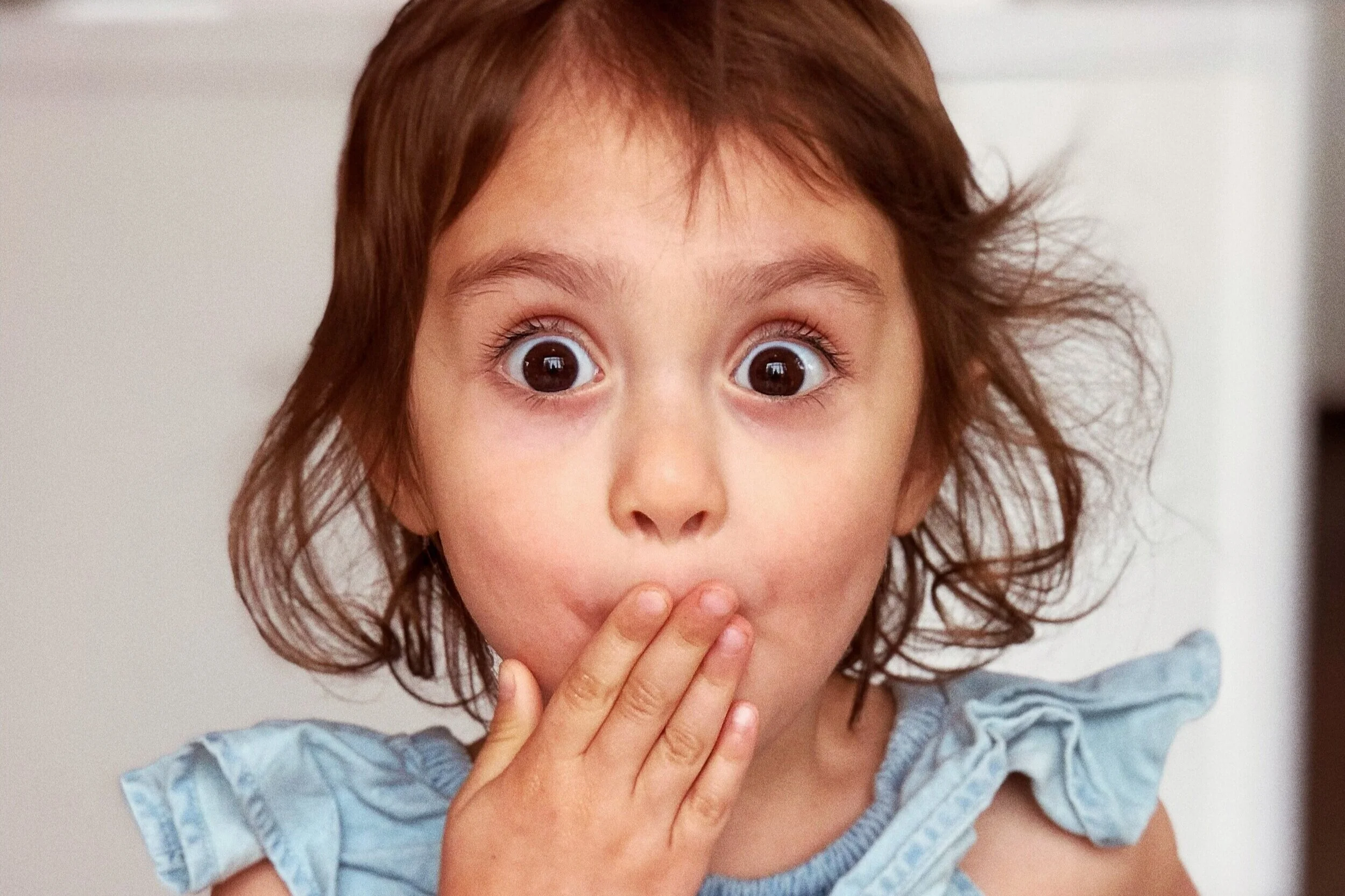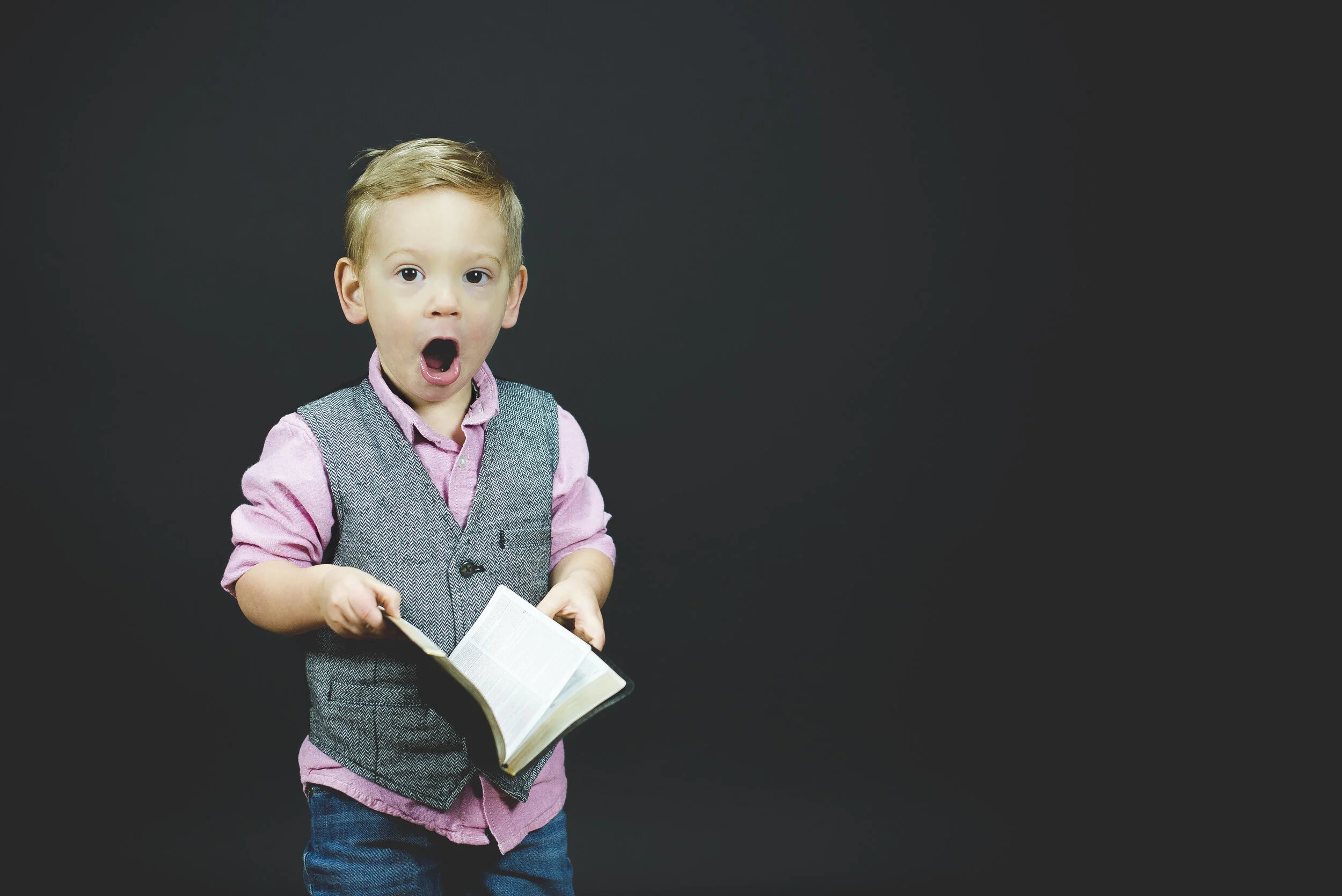“Use your words.”
Have you ever asked a young child to do this? Me too! Preschoolers and toddlers are notorious for acting out their feelings through tantrums, whining, hitting, and countless other behaviors that can be stressful for everyone involved. One of the reasons why preschoolers often resort to physical displays of emotion is that it’s hard for them to put their feelings and needs into words. When you aren’t able to tell people around you that something makes you angry, it’s easy to understand why you might resort to showing your feelings instead! When children can say “I’m mad”, it' makes them less likely to show their anger in other ways, like hitting.
I wish I could say that helping your preschooler name feelings would magically resolve all tantrums and naughty behavior. That’s not the case. I do notice, though, that young children in my office are often familiar with feelings words, but have a hard time applying those words to themselves or other people. Learning to put names to feelings is an early goal for many of my younger clients, and it can help kids with disruptive behavior at home, too. Here are 4 activities to practice emotion identification skills with your preschooler or toddler.
Make it a Game
Lots of children’s games can be modified to incorporate education about feelings. In my office, I have a wooden toy fishing set (this one) with photos of different emotions taped to the bottom of each fish. Whenever someone catches a fish, they have to name the feeling and mimic the facial expression shown. Kids really have fun with this, and I’ve found that after repeating the game a few times, it’s easier for them to correctly name the feelings.
You can apply this idea to all sorts of games. Here’s a few others to consider:
Memory game: print 2 pairs of each facial expression and lay the images face-down.
Charades: take turns portraying different emotions with your child, and guess what feeling the other is trying to communicate.
Simple games like Candy Land and Jenga that require drawing or collecting blocks or cards can be tweaked to include emotion identification. Add an emoji sticker to each block or card, or use color coding to prompt children to identify or talk about a specific feeling whenever a card of that color is drawn.
TV and Books as Learning Opportunities
Any children’s story has lots of opportunities to prompt kids to reflect about feelings. When watching TV or reading a book with your child, you can model how to think about other peoples’ emotions. This can make it easier for your child to identify feelings in themselves and others, and also helps to develop empathy. You might want to pause stories to ask questions like:
How do you think the character feels when someone is not nice to them?
What kind of face is this character making?
What feeling is the character’s body showing?
You can also select books to read at home that specifically introduce the subject of naming emotions. One book that I particularly like is The Color Monster by Anna Llenas. It’s a pop-up book that is bright and engaging enough to hold the attention of preschool children. It helps kids understand emotions by linking each feeling to a different color.
Help Your Child Label Emotions
Young children aren’t always aware of how they are feeling in the moment: their feelings may be intense and sudden, but hard to express in words. You can help your child develop their ability to connect her emotions to the physical sensations she feels in her body by calling out feelings when you see them. It’s also useful to practice naming your own feelings for kids, and guessing about the feelings of family members. Comments like these can help children feel more understood, and make it easier to name feelings:
“Wow, your baby sister smiled and laughed when you did that! It made her feel really happy.”
“I can see that your hands are making fists and you are feeling angry right now.”
“It must be scary to see those monsters on TV.”
When labeling feelings for young children, stick to simple emotions: happy, mad, sad, and scared are a great place to start. As children get older, they will be ready to talk about more nuanced and complex feelings like surprise, frustration, and jealousy.
Use Visual Aids
Before children master the vocabulary to name feelings, they can often point to how they’re feeling if shown some options in pictures. If you went to school in the 90s, you might remember that ubiquitous “How Are You Feeling Today?” poster that had a ton of cartoon faces showing complex feelings like “lovestruck” and “ecstatic.” A large number of choices and advanced vocabulary are not super helpful for preschoolers, but lots of options exist for simpler, less busy feelings charts.
You can find tons of examples of feelings charts online, or make your own at home by gluing feelings faces to a piece of paper, or tacking them on to a bulletin board. Consider adding the basic emotions (happy, sad, angry, scared) and perhaps a few others your child might be working on mastering, such as surprised, tired, nervous, or excited. Ask your child each day to point to how he is feeling, and follow up by naming the feeling he selected and talking about why he feels that way today.
I often use a strip of cartoon or emoji faces that looks like the pain scale used in doctor’s offices to help children rate how intense their anxiety or anger is at a given moment. This can help children to understand that emotions don’t always have to be the same strength, and that using coping skills can reduce the intensity of a feeling.
I hope this list has given you some inspiration to start talking about feelings with your preschooler in a more deliberate way. While a good emotional vocabulary can’t solve every preschool problem, it can definitely help. If you think your preschooler could use some more help expressing feelings in a healthy way, reach out to learn more about play therapy and child counseling.



